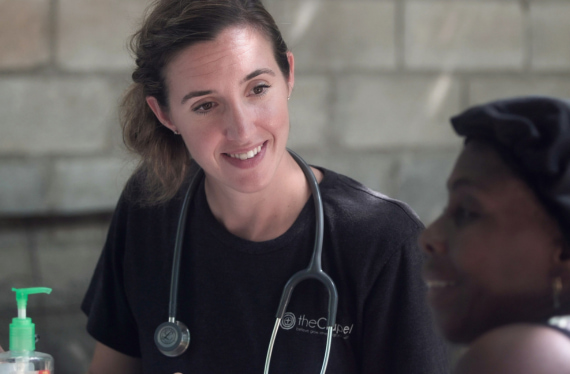Today, more people are turning to non-surgical treatments to enhance their appearance and boost their confidence. According to the National Library of Medicine, 76 percent of plastic surgeons reported increased demand for elective aesthetic procedures in 2021.
As a result, the field of medical aesthetics has rapidly expanded—capturing the interest of both practitioners and patients.
If you’re interested in a career in medical aesthetics, it’s crucial to choose the right medical aesthetics training courses to help you achieve your professional goals.
What Is Medical Aesthetics Training?
Medical aesthetics training focuses on non-surgical procedures that enhance cosmetic appearance by treating conditions like scars, skin laxity, wrinkles, moles, excess fat, and cellulite.
These programs cover a variety of treatments, including:
- Neurotoxin injections
- Dermal fillers
- Laser therapies
For many nurses who administer injections everyday, this training might seem “unnecessary.” However, aesthetic medicine techniques, applications, and procedures differ from traditional methods.
“It’s more complex than you may think,” says Sharon Higgins, Interim Carol A. Donovan Endowed Dean of Nursing at Regis College. “Knowing how to elicit a history, conduct the appropriate physical exams, administer medications—all of those things are obviously very important as a nurse, but learning the specifics with regards to aesthetic treatments is something you can only get from specialized training.”
As the demand for non-surgical aesthetic procedures continues to grow, it becomes even more essential to understand what makes a quality training program. Here are seven key aspects to consider when selecting a medical aesthetics training course.
Seven Things to Look for in a Medical Aesthetic Training Program
1. Accreditation
Accreditation is one of the most important components of any medical training. It ensures the program meets the rigorous standards necessary for professional practice, particularly in a field as sensitive as aesthetics, where practitioners directly impact client health and wellbeing.
While medical aesthetics aren’t covered under traditional accrediting bodies, the need for comprehensive education and rigorous oversight still apply. Therefore, enrolling in a training program that promotes high standards and adheres to the latest health and safety regulations is essential.
“Regis is an accredited nursing program, but the aesthetics itself isn't an accredited program,” Higgins says. “But I think having a college credential from a school that does aesthetics elevates your professional certificate.”
That’s why many nurses who complete accredited programs are often seen as more competitive in the job market since they’ve committed to more rigorous and educational training.
2. Comprehensive Curriculum
Medical aesthetics training programs should cover a broad range of topics, from the basics of anatomy and physiology related to aesthetics to advanced techniques in non-surgical procedures like fillers and laser treatments.
“The curriculum really needs to touch on a few things,” Higgins says. “It should focus on anatomy and physiology of the body parts that you would be injecting, understanding the products and the pharmacology, the techniques for administration, proper documentation requirements, and how to treat adverse outcomes."
Medical aesthetic training goes beyond clinical skills though. These programs focus on developing artistic skills to enhance natural beauty—like the art of symmetry to create natural-looking results. This training blends science and art, empowering practitioners to tailor treatments that complement each individual's unique features.
3. Hands-On Training
Aesthetic treatments often involve decision-making based on individual patient needs and conditions. Hands-on training in a clinical setting provides students with the opportunity to encounter a variety of cases to help them navigate possible challenges they may face.
This helps them learn how to:
- Assess patient needs
- Plan treatment strategies
- Anticipate possible outcomes
This begins with the traditional process of gathering patient history, medical information, and gaining consent, but in aesthetics, this can also include denying treatment to a patient when necessary.
“You learn what some of the complications are, how these complications are treated, and who’s a good candidate to receive this type of therapy or medicine,” Higgins says. “Because there are always going to be some kind of constraints to treatment for some patients.”
4. Qualified Instructors
In the specialized field of medical aesthetics, instructors play a critical role in shaping the future success of aesthetic nurses. Qualified instructors bring practical experience and industry knowledge that’s incredibly valuable to training programs.
“You want to look at the experience level of who you were learning from,” Higgins says. “How long they’ve been around, what their ratings look like, etc.”
For medical aesthetic training programs to be truly effective, it’s essential the faculty members aren’t just experienced but are also actively engaged in the medical aesthetics industry. Their ongoing practice allows them to offer students the most current insights, integrating cutting-edge trends and real-world case studies into the curriculum.
These educational programs can also help you build a strong professional network. By engaging with instructors, students can make invaluable connections that often play a critical role in job placements and career advancement in the dynamic field of medical aesthetics.
5. Support Services
Comprehensive educational support services are indispensable in medical aesthetics training.
These services can include:
- Career guidance
- Job placement assistance
- Continuing education opportunities
Career services are particularly vital in medical aesthetics training programs. They provide students with the tools and opportunities necessary to transition from education to employment seamlessly.
The importance of continuing education in this field cannot be overstated though.
“Continuing education in this field is important because new products come out, new techniques might come out, new indications for these products may come out."
The fast-paced nature of medical aesthetics means practitioners need to continually update their knowledge and skills to keep up with the latest developments. Programs that provide ongoing educational opportunities ensure that their graduates remain competent and competitive in the field.
6. Regulatory Compliance
While regulatory standards aren’t necessarily a requirement in medical aesthetics, they’re still a critical element of professional practice in the field. Regulatory compliance in medical aesthetics training programs can help ensure students are equipped with the knowledge and skills necessary to perform procedures safely and effectively.
Training programs that prioritize regulatory compliance prepare students to navigate the complex landscape of ethical standards for various medical procedures. This preparation is crucial since standards can vary significantly from one region to another and are subject to constant change.
A curriculum that integrates comprehensive training on regulatory compliance instills a culture of integrity and professionalism. It emphasizes the importance of ethical practice and builds a foundational understanding that compliance is integral to quality care and patient trust.
7. Flexible Learning Options
Flexible learning options are important because they accommodate the diverse needs of students who may be balancing professional commitments and personal responsibilities along with education.
Flexible learning options can include:
- Online courses
- Hybrid programs
- Part-time schedules
This flexibility can significantly enhance student engagement by reducing the stress of balancing school with other life demands.
Regis College's medical aesthetics program is one example of how a medical aesthetics training program can adapt to meet working professionals’ needs. They provide a variety of learning formats, allowing students to choose what educational path best suits their schedule and learning preferences.
Start Your Career in Medical Aesthetics
The significance of quality training in medical aesthetics cannot be overstated. As the industry continues to grow and evolve, the demand for highly skilled and knowledgeable practitioners is more critical than ever.
That’s why the industry leader in aesthetics training partnered with Regis College to create a comprehensive program for prospective aesthetic nurses.
“By partnering with a college, we can raise the standards out there for this type of training,” Higgins concludes. “This comprehensive certificate program is the route that we chose to go to ensure that our graduates are well-prepared for the field.”
By choosing a program like Regis College’s Aesthetic Intensive™ Certificate, students are more likely to thrive in this dynamic field. Investing in such high-caliber training is essential for anyone aspiring to make a significant impact in medical aesthetics.
Aesthetic nursing requires as much hands-on practice as you can get. Learn more about Regis’s aesthetic nursing education program.



